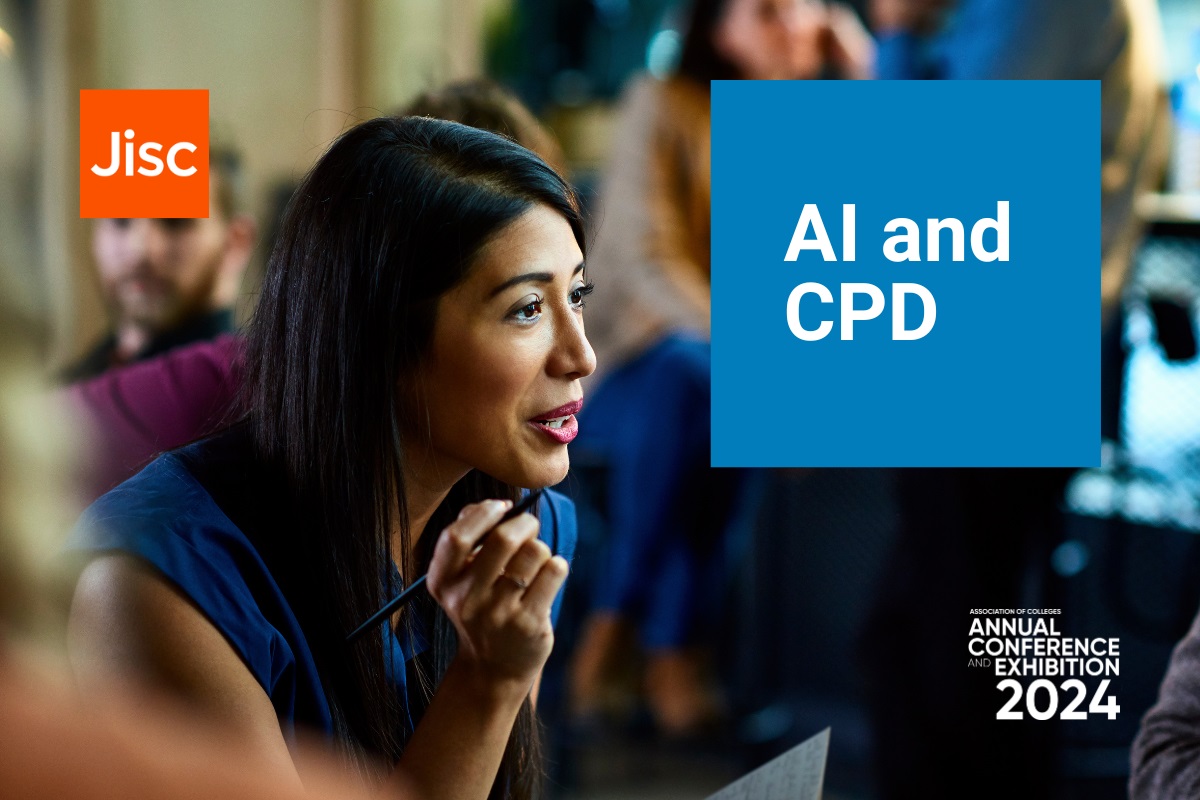More Flexible Levy? Tom Speaks To Kirstie Donnelly For #SkillsWorld

Tom Bewick: [00:00:23] Hello and welcome to Skills World the podcast.
I’m absolutely delighted today to be joined by Kirstie Donnelly who’s the group managing director of City & Guilds. Kirstie you’ll be kicking off this new series, so thanks for agreeing to do that.
Kirstie Donnelly: [00:00:37] Well thanks, no pressure there then Tom!
Flex for Success
Tom Bewick: [00:00:40] Now look there’s so many things we can actually talk about today but one of things I really wanted to focus on with you was an excellent report that City & Guilds, working with ILM and indeed with the CBI, published before Christmas called, “Flex for Success”, and you looked at the operation of the Levy.
I think it was 765 businesses that you surveyed. So, a pretty large sample, and you found that about 56 per cent, so just over half, were planning to use their Levy.
Which is encouraging at one level, but also perhaps a little discouraging, the idea that nearly half of employers aren’t even planning to provide apprenticeships through the Levy.
What do you put down to the low take up we’ve had around apprenticeships to date?
{https://soundcloud.com/fenews/employers-want-a-more-flexible-levy-tom-talks-to-kirstie-donnelly-for-skillsworld/s-xA6R0}
Kirstie Donnelly: [00:01:23] I think we still have to except we’re at the beginnings of creating an apprenticeship system. There is an element and it’s something, (Hello, I’m going to sound like the government myself when I say this!) but there’s an element of us needing to be patient. But I do think patience is running out a little bit.
One of the reasons that we did do the Flex for Success report was because last October the Chancellor himself promised there would be a consultation with employers separately around the Levy, around apprenticeships.
That hasn’t happened yet, and I don’t think it’s going to happen now till beyond Brexit, whenever that may well be.
Yet we know that employers have got a lot to say about what actually is happening in reality, and how difficult they’re finding to cut through some of the red tape, to understand exactly what it takes to be an employer provider within this Apprenticeship system.
I think we felt that we needed to start to shine a light on exactly what was happening. So, like you, we were both heartened by the fact there was at least you know over 50 percent of the employers that we surveyed are actually actively participating in the Levy.
Interesting then to get underneath what exactly and where they’re spending their Levy though, I think that tells a different story again. But as you say worrying that there’s still so many who aren’t.
That’s because I think a lot of employers are still quite confused by it, they still just see it as a tax.
They don’t believe there is the right support in how they can use the Levy, hence the title Flex for Success, in terms of how they engage with future apprentices, how do they create the future talent pipeline, how they could use a Levy to support a broader range of activities, that still could make such a system successful.
So, I think there are a number of barriers and blockers, which again we highlighted in the report itself, that I think we’ve just got to seriously get underneath, if we genuinely want this system to be successful.
I think the bottom line is we do! I think employers, ourselves, the government, we all want it to be successful.
Blockers To The Success Of The Apprenticeship Levy
Tom Bewick: [00:03:12] Okay, well let’s drill down into some of the blockers, as you call them in the report in just a moment, but we’re obviously focused here on the Levy, but as you know the reforms have been also about introducing new standards.
So, a major financial innovation has happened at the same time as, if you like, a major program change.
Do you think, when you look at the whole success to date of the new Apprenticeship system, that perhaps there’s so much reform going on, that overall that has perhaps confused some of the messages around? For example, employers using the Levy.
Kirstie Donnelly: [00:03:43] To a certain extent I think employers are slightly immune from a lot of the policy reform that’s happening.
I think there’s no doubt they’ve been most impacted by the Apprenticeship reform, of course we’ve got T Levels coming down stream, and there’s no doubt that employers are starting to sort of very much question:
“Well hold on a minute, what’s all this talk about us needing to get actively involved in T Levels, and work-placements, and where does that fit with the whole apprenticeship system?“
So I think we’ve got a lot of work to do, and the government’s got a lot of work to do to help the connection between the T Level system, as you might call it, and the policy reforms there, and Apprenticeships.
So, you’re right, there has been a lot to contend with, and if you think about the level of turbulence that we are seeing, and the shake-up we’re seeing, within the policy and market, for you know it’s technically post 16 education and Apprenticeships generally. We’ve probably not seen anything like it for the last 30/35 years.
On one level it is very much needed, the problem is we’re almost throwing everything at it in one go.
I think that does create an awful lot of confusion, and switches employers off. Employers think: “Well hold on a minute, we’ve got a job to do here which is contributing to UK Plc in contributing to our own business, how much can we really get involved?“
Unless of course we make as easy as possible for them to do so.
Tom Bewick: [00:04:55] So coming back to Flex for Success and the blockers, as you called it in the report.
In fact, there are around I think, 10 barriers to employers effectively engaging with the Levy on the Apprenticeship system.
But the top three were really interesting for me:
- Number one was actually around the lack of young apprentices that employers said that they couldn’t find in their local labour markets.
- Number two was around a sense, I think around a third those firms that you surveyed, said they couldn’t find either providers, or colleges, or universities, that were able to actually deliver the training that they wanted.
- Thirdly, and this is a bit of an old chestnut I think around the Learning and Skills sector the 20 percent off the job, and some employers, around again a third, saying that they just couldn’t work with that sort of inflexible model.
I mean you’ve three quite chunky concerns there.
What way forward you see on tackling some of those blockers as you call them?
Young people suffer perennially from a lack of good careers advice and guidance
Kirstie Donnelly: [00:05:52] Well let’s take each three in turn very briefly.
So, the first one is the age-old chestnut of you know, we don’t have a good careers advice and guidance system in this country.
We have absolutely continued to suffer perennially from the fact of the matter that we haven’t invested in that sufficiently enough, and therefore we don’t have enough young people, we don’t have enough schools, we don’t have enough parents, despite all the good stories, the case studies, that I go out and hear about now, of apprentices who’ve deliberately chosen a route, rather than going to, for example, university.
There’s some great cases out there, but they are still in the minority, not the majority.
I think until we switch that tap on, until we stop measuring school success through school performance league tables, and we measure it through apprenticeship opportunities as well.
Until we actually start providing really good engagement between the industries, the employers that are the future workforce for these young people, into the school system, I just think we’re going to continue to battle that issue.
So, I think more can be done and hence that’s what Flex for Success was calling for.
In fact, many employers themselves have said: “Let us, even if have to put more into the Levy for that matter, let us at least use it so we can widen our program of engagement with young people, so we can meet more young people aware of the sort of careers and opportunities that could exist through Apprenticeship routes.”
That’s definitely one area.
Training Providers Need To Get Their Act Together
Tom Bewick: [00:07:06] There is a paradox, isn’t here, because on the one hand employers appear to be saying: “You know we just can’t find the young people out there to do the Apprenticeships“.
The overall stats for Apprenticeship starts show that in the last sort of three years, the numbers of 16 to sort of twenty-four year-olds has fallen off a cliff.
Two thirds of all apprenticeships now actually go to the over 25s. Nothing wrong with that in terms of retraining, but it seems there’s obviously the desire out there.
You’re picking up amongst your firms that they want to take on young people, yet the programs that’s currently designed obviously is not. At one end, as you say, from the school system attracting young people, and that could be as you say, issues to do with the information, advice and guidance system.
I think there’s also, following the Baker Clause, still concern about whether schools are actually exposing their young people to Apprenticeships as an option.
But you know the second sort of blocker around training providers not potentially stepping up to the block, a third of employers citing that as a key blocker.
I mean is that not a big business opportunity for training providers to sort of get their act together?
Kirstie Donnelly: [00:08:14] Absolutely, and I think that point also links later to the 20 percent off the job that you were referring to as well.
I think training providers, providers generally, colleges, were all having to think quite differently, and need to think quite differently, about what it is we go and offer employers.
We need to offer more blended solutions, we need to recognise the blend between the off the job and the on the job.
When you think differently around not being centred around, you know four walls, bricks and four walls of an institute, or a college, or a provider, and think about how we do different models.
There are a lot of good providers out there doing that, but nonetheless I think what the research showed was that now employers are much more switched on to the fact, they see it as their money.
It may well be a tax, but they see it as their money to spend on their talent. They’ve got a lot more to say about what they’re expecting.
You know the whole idea that this is meant to be an employer responsive system is probably what we’re seeing coming through there, because up until now, it hasn’t really been led by employers.
I don’t think we really would say the Apprenticeship system is being led by employers, but I think they are starting to wake up.
I think this is what this report started to show us, that they’ve started to say: “Hold on a minute. We’ve got to get serious about this, but we’ve got to actually therefore expect more from the partners that we work with, like providers, to actually deliver, at a more local level, what we need, and when we need it”.
You know we’re no longer talking about designing programs that are going to last five and 10 years.
We think about the whole skills world and how that changing. You’re talking about skills that could be, in essence, need updating or redundant, in two or three years.
So, there is a whole different swing that I think the provider sector does have to step up and meet that challenge from employers.
Equally I would say employers have to get a lot better at saying what they require and working much more in a collaboration with the provider sector.
Setting Clear Parameters About What A More Flexible Levy Could, And Should Be Spent On
Tom Bewick: [00:09:56] Absolutely, and the clarion call from this report is flexibility.
Employers are demanding that in relation to the operation of the Levy, and of course we’re seeing some of the choices that employers are already making with new apprenticeship standards.
I think the fastest growing area for example is around Chartered Management Apprenticeship standards.
That suggests to me that employers, where they are actively engaging with the new Apprenticeship model, they’re going for, if you like, the other higher level skills, the skills that we know impact, quite significantly, on productivity.
But Kirstie, do you think that there is a danger in Flex for Success actually, employers having too much flexibility around the Levy, and that over time what that could just morph into is a kind of just a generic training program, where actually employers will tend to want to give investment to those employees that, frankly, already get the training?
Kirstie Donnelly: [00:10:52] I think that’s a fair challenge. I don’t think, for one minute, that’s what we’re suggesting, by the way, in Flex for Success.
Don’t get me wrong, I think there were there are some employers who probably, rather unrealistically, would think they would like to spend it on whatever they want, including their own product training, or health and safety in the things that really they should be just doing as good employers.
I think there is absolutely an opportunity for us to put parameters in the Levy. Even, as I said, expand the Levy and even have more going into it. But only if you set certain parameters about how much should still be ring fenced for a specific Apprenticeship training, how much should be ring fenced for possibly Pre-Apprenticeship programs, if I dare bring that title back up.
You know, how do we actually solve the level two issues that we know exist?
Which we know that level two is very much valued as really good quality training, by employers and by individuals.
So, I think we could set some very clear parameters to have flexibility, but at the same time not be as rigid as we are currently, which I think is what’s getting in the way of solving some of the blockers that we’re seeing today.
So, I think is about a little bit of imaginative thought, opening up their horizons a little bit about what we could do here, but still setting some very clear parameters about what exactly a more flexible Levy could and should be spent on.
Tom Bewick: [00:12:04] Well perhaps we’ll end on that note of setting some clearer parameters.
Kirstie, we could talk about this all day but alas, this is the first episode of the new series, so I won’t try our audience too much with the time.
Just to say to those listeners that are interested in the Flex for Success report, please visit the City & Guilds website, where you can download a free copy.
That just leaves me to say, Kirstie Donnelly, Group Managing Director of City & Guilds, ILM. Thanks for joining us today.
Kirstie Donnelly: [00:12:33] Thank you very much Tom.







Responses